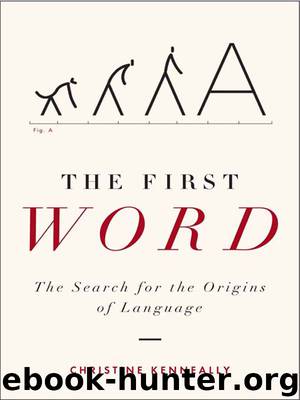The First Word by Christine Kenneally

Author:Christine Kenneally
Language: eng
Format: epub
Publisher: Penguin Publishing Group
Published: 2010-03-01T05:00:00+00:00
Brad Schlaggar, a pediatric neurologist and a professor at Washington University in St. Louis, says that the best way to think of plasticity is as a support structure. When he gives a talk about plasticity, he always shows students slides of the St. Louis Arch. “As the structure goes up,” he explains, “the relationship between the scaffolding and the leading edge of the two sides of the arch changes as they rise up to meet in the middle. The relationship between the scaffold and the emerging mature structure is dynamic, as opposed to a scaffold that surrounds a building and then comes down again.” So if damage occurs to the brain of a seven-year-old child, it occurs in a completely different context than if the child were much older or younger. “The scaffolding idea means that even in adults, the organization of the brain for learning a novel task or a challenging task is different from the organization of implementing that task once you have acquired the skill.” The scaffolding for language seems to be particularly flexible. Fred Dick describes the development of language as a moving target. If damage is sustained in one area, language may move, morph, and settle into another.
In his doctoral work Schlaggar transplanted the visual cortex of one fetal rat brain into another, placing it in the spot where the somatosensory cortex, which normally controls the body as it moves through space, typically develops. Schlaggar found that the transplanted visual cortex grew into a fully functioning somatosensory cortex. The inputs into the new region came from the body as it moved in space, and as a result that neural tissue became wired to process that kind of information.
We tend to think of the brain as developing on a completely separate trajectory from that of the body. Traditionally researchers imagined that the brain had some kind of central developmental controller instructing different parts to assume responsibility for different abilities (the visual cortex develops particular types of neurons, while the auditory cortex develops differently specialized neurons, and so on). But recent research has cast grave doubts on the existence of any kind of central controller. It looks as if the brain tissue that ends up becoming part of different specialized regions is not necessarily fated to end up that way, and that input to the brain coming through the filter of the body contributes to its architecture.
Leah Krubitzer, a professor of psychology at the University of California, Davis, also demonstrated how the immature brain isn’t fated to be mapped into the specific regions that are typical of the adult brain. She removed a big chunk of the brain of newborn marsupials, and then let them grow up and develop normally. After they reached adulthood, she took another look at their brains. The cortices had organized themselves into exactly the same areas as a normal brain would, all in the same spots relative to each other, but they were all slightly smaller, so as to fit within the smaller brain.
Download
This site does not store any files on its server. We only index and link to content provided by other sites. Please contact the content providers to delete copyright contents if any and email us, we'll remove relevant links or contents immediately.
Sapiens: A Brief History of Humankind by Yuval Noah Harari(14254)
Sapiens by Yuval Noah Harari(5294)
Pale Blue Dot by Carl Sagan(4913)
Homo Deus: A Brief History of Tomorrow by Yuval Noah Harari(4827)
Livewired by David Eagleman(3685)
Origin Story: A Big History of Everything by David Christian(3649)
Brief Answers to the Big Questions by Stephen Hawking(3369)
Inferior by Angela Saini(3276)
Origin Story by David Christian(3148)
Signature in the Cell: DNA and the Evidence for Intelligent Design by Stephen C. Meyer(3071)
The Gene: An Intimate History by Siddhartha Mukherjee(3048)
The Evolution of Beauty by Richard O. Prum(2939)
Aliens by Jim Al-Khalili(2787)
How The Mind Works by Steven Pinker(2729)
A Short History of Nearly Everything by Bryson Bill(2629)
Sex at Dawn: The Prehistoric Origins of Modern Sexuality by Ryan Christopher(2482)
From Bacteria to Bach and Back by Daniel C. Dennett(2448)
Endless Forms Most Beautiful by Sean B. Carroll(2431)
Who We Are and How We Got Here by David Reich(2399)
